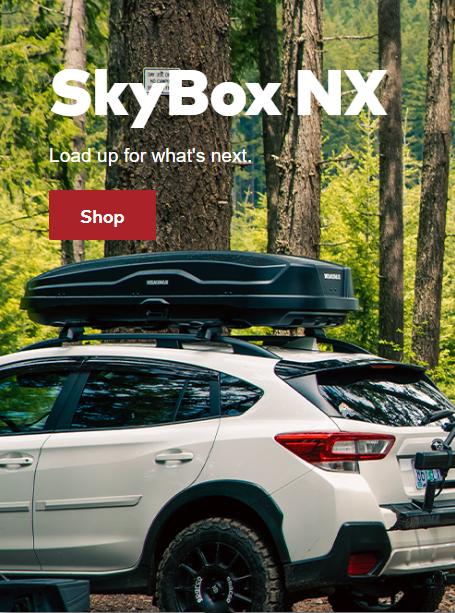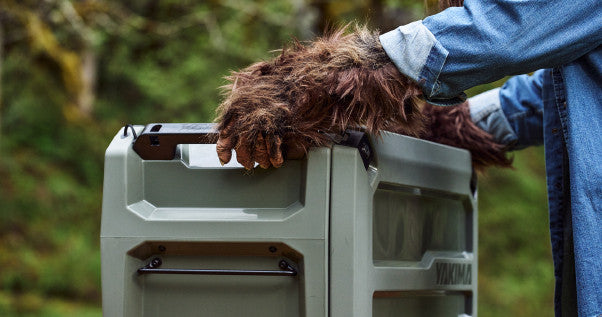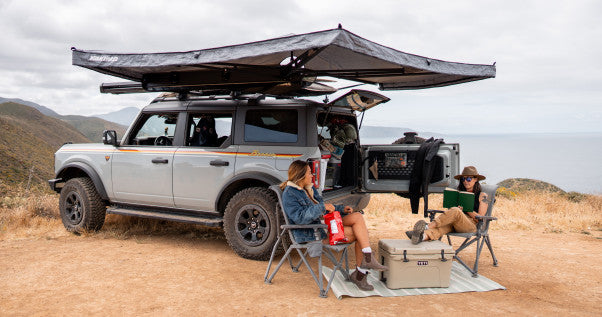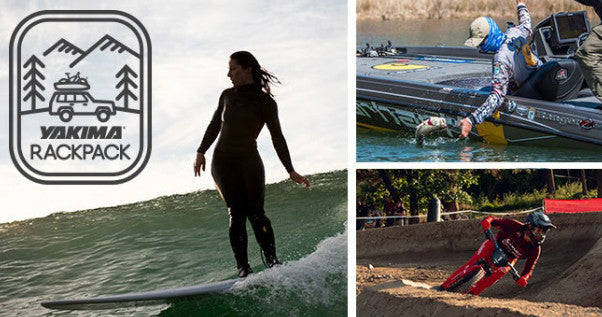The Transporters: Car-Top Carriers & Bike Racks That Go Above & Beyond
Car-top carriers are capable of adapting to a broader variety of stowed items than ever before. Today’s bicycle racks are designed to provide more stability for the bicycles that they carry.
Weekend warriors and sports fanatics used to specialize: Skiers skied, campers camped and bicyclists biked. Now, more people seem to embrace multiple sports, and the manufacturers of car-top carriers and bicycle racks, or bike racks, noticed.
You can pack different types of gear into today’s cargo carriers, and manufacturers now produce models that fit nearly every vehicle type better. Universal fit is a top trend, says Chris Ritchie of Thule, which makes car-top carriers and bike racks. In past years, cargo carriers got in the way of minivan and SUV hatch access, which left consumers to choose between cargo space and hatch accessibility. Today’s models provide more clearance. To discover which cargo carrier fits your specific vehicle, manufacturers and dealers typically have forms available on their websites that allow you to input your vehicle’s make and model and learn what options best fit your vehicle.
Furthermore, consumers have more models from which to choose than ever before of the three most popular styles of bike racks—hitch mounts, roof mounts and trunk mounts. Bike-touring operation owner and cyclist Tony Blakey of LifeCycle Adventures, who buys new racks every year for his business, says he’s seen more options in the past 2–3 years, particularly for “wheel on” transportation in roof-mounted carriers, which are models that allow you to stow bikes without detaching the front wheel, and for hitch mounts that give you more choice in the number of bikes that you can haul.
Ritchie says bike racks today stress more versatility than they did in the past. “You’ve got your road bike, mountain bike, your kids’ bikes, your fat-tire bike, and it all needs to go on the same rack,” Ritchie says.
CARGO TECH. The tweaks for car-top carriers focus on better aerodynamics and more usability.
Three manufacturers—Inno, Thule and Yakima—say they added stiffer carbonite plastic to their hard car-top carriers. These models, which start at $600, have lids that are made of layers of carbonite plastic, which, manufacturers say, are stiffer than are previous models’ lids. Because they have an aerodynamic design, carbonite bike racks produce less wind resistance than do previous models. No manufacturer could quantify how much less wind resistance, and we didn’t find any independent observers who could confirm this.
Furthermore, these three brands created angled rear ends that are designed to achieve a lower profile as well as to prevent interference when your minivan or SUV hatch is open.
Two manufacturers also made hard car-top-carrier fasteners that take out the guesswork of determining whether the car-top carrier—and your cargo—is secure.
Thule added mounting clamps inside of its car-top carriers that now make an audible click when the clamp is tightened. Ritchie likens it to a locking cap on your vehicle’s fuel tank: When you hear a click, then you know that the car-top carrier is secure. This feature is on car-top carriers that start at $800.
Yakima added an oversize push-button latch to its Skybox Carbonite line, which starts at $449. The key to the car-top carrier can’t come out of the lock until the lid is latched securely. We found that this feature also eliminates some of the elbow grease that you have to provide typically to tug open the car-top-carrier lid.
The universality theme extends to soft car-top carriers, too. Now, six manufacturers make models that don’t require a roof rack to secure the car-top carrier. These models, which start at about $90, lie flat on your vehicle’s roof and are secured by pass-through straps that weave through the soft car-top carrier and then wrap securely through your vehicle windows or doors. (Crossbars don’t impinge on a soft car-top carrier’s use, so if you have crossbars installed already, no problem.)
{pagebreak}
CYCLING AHEAD. When it comes to bike racks, features that keep bikes from moving side to side or rubbing against one another as you transport them have become widespread. At least one model of every brand now has this feature. These include anti-sway cradles that prevent shaking and rattling as well as padded strips to keep bikes from touching one another—or your vehicle.
Furthermore, every premium hitch-mount model and some midrange models have the capability to tilt or swing away from your vehicle’s hatch or trunk. This provides you with easier access to your trunk or cargo area. Seven brands have a tilt or swing feature on models that cost as low as $140. We found that, although the tilt feature allows you to reach around loaded bikes to grab items that are inside of your trunk or cargo area, the swing feature, which is found on models that start at $300, proves to be more useful. Bike racks that swing away are hinged, so they open similar to a gate, which moves the bikes and rack out of the way completely.
Manufacturers tell us that they continue to work on ways to keep bikes stable in the bike rack. Consumers now can find stability innovations standard on roof-mount models that start at $85, on trunk-mount models that start at $100 and on hitch-mount models that start at $210.
Models from at least four brands now feature more-advanced straps to ensure that you get the most precise fit that’s possible. These straps use a ratcheting mechanism or toothed clasp, which clicks into place, like a ratchet, as you pull on the strap to tighten it around your bike frame. We found that these require less leverage and less effort than does the previous approach—a daisy chain or nylon tie-down—and grip the frame more precisely. You’ll pay at least $310 for a model that has advanced-strap technology.
“My personal impression is that more racks are gradually evolving rather than being radically redesigned: an extra clip here, a better latch there,” Blakey says.
Unfortunately, no clear-cut way exists to deter thieves, although manufacturers of bike racks took steps in that regard in the past 3 years.
“Other than [included] cable locks, which are all by default flimsy and easily cut, there have not been huge leaps in the way of keeping thieves from stealing bikes off your car,” says Alex Allen of manufacturer Allen Sports.
That said, models have emerged that deter thieves from lifting the entire rack off the vehicle, bikes and all. The majority of today’s premium models feature full locking capability, which means that the bike is locked to the bike rack and the bike rack is locked to the vehicle. The bike rack attaches to the vehicle by a locking knob and a locking cable that retracts out of the front-wheel cradle to wrap around the bike frame or a lock that secures the hitch mount to the receiver, or the square tube that’s fixed to the frame of the vehicle. Models that have this feature start at $180.
However, manufacturers aren’t working on tougher locks, because those still wouldn’t guarantee that thieves would be thwarted. “We could certainly add more-robust locking features,” Ritchie says. Even if they did, he says, no manufacturer could claim that its bike rack were theft-proof, just like no automaker would make such a claim about its vehicles.
“When thinking about adding on a locking technology that would make these racks much more complicated than necessary, we start to question if it’s worth it, design- and cost-wise,” says Allen, whose company’s models exclude locks. He estimates that it would add $40 to the price of a bike rack to add a locking feature, compared with an average of $11 to buy an aftermarket lock.
As far as detecting or tracking thieves through a high-tech solution, such as a mobile app that would alert you if your bike were stolen, manufacturers haven’t developed those and were mum about why.
“We’re still a couple of years away from seeing extensive app and security interaction with sport racks,” says Joel Grabenstein of Yakima. He declined to provide a specific time frame. Other manufacturers were equally vague.














